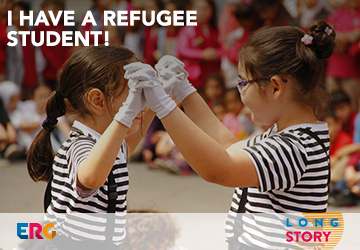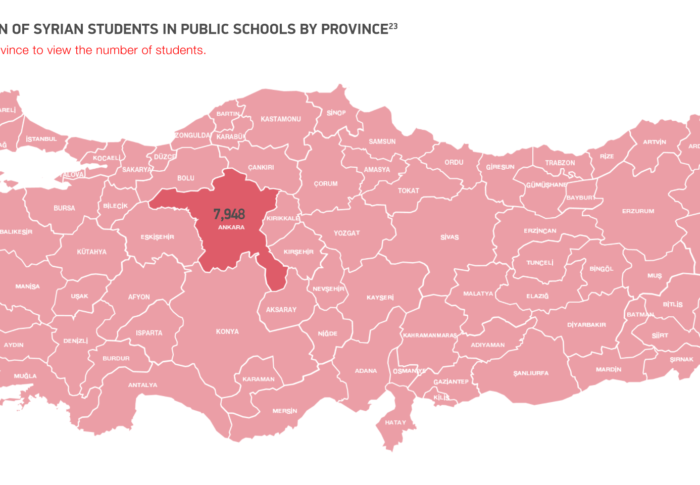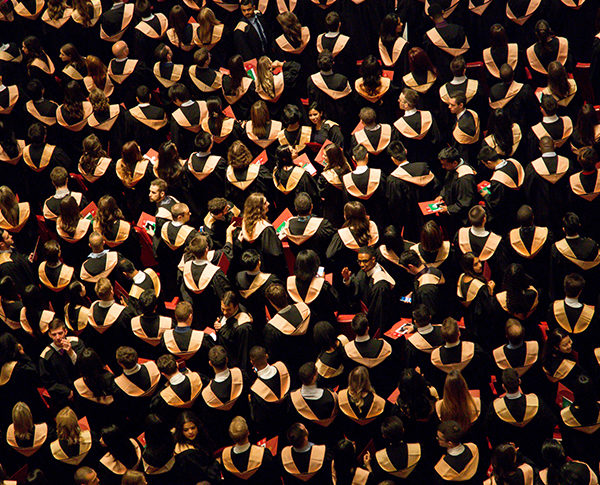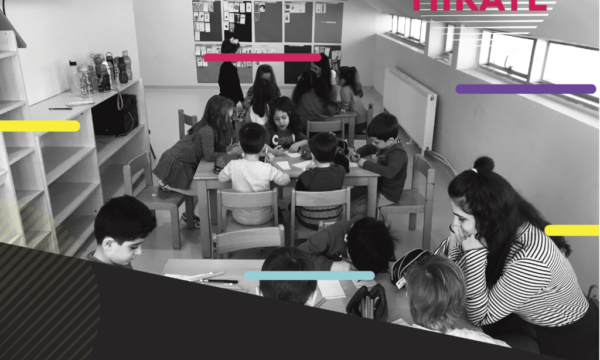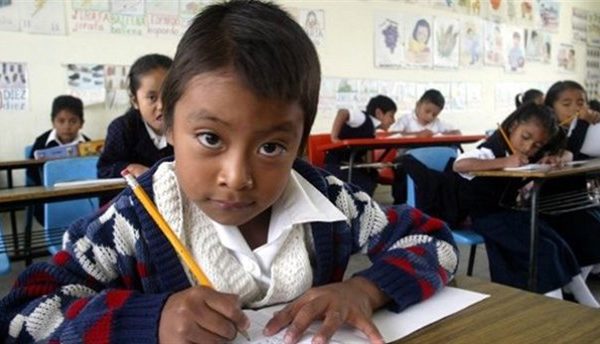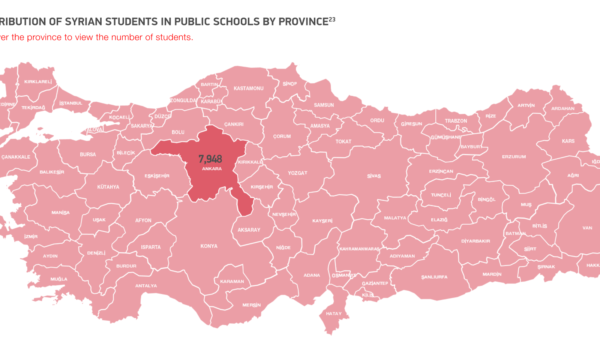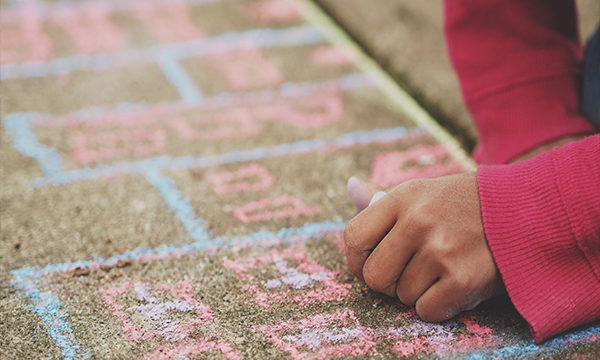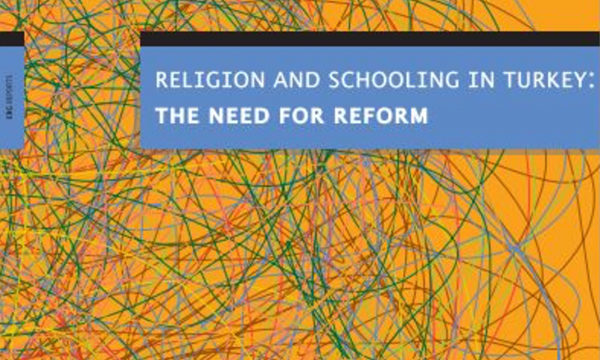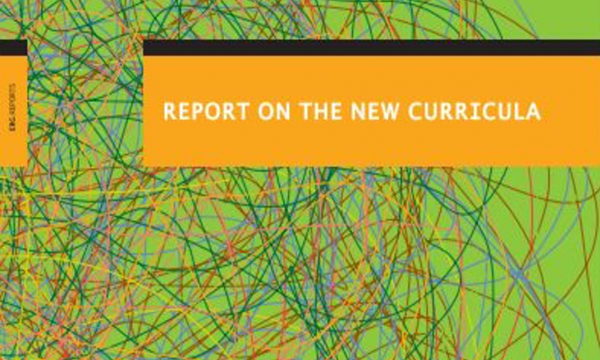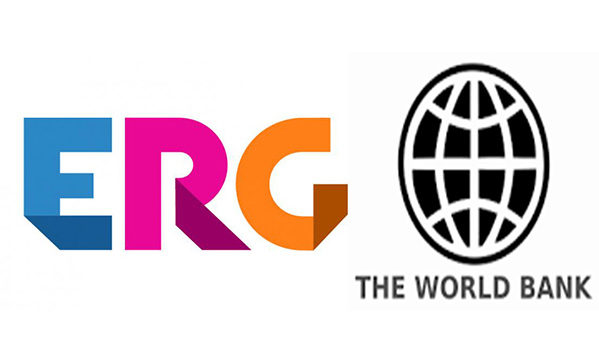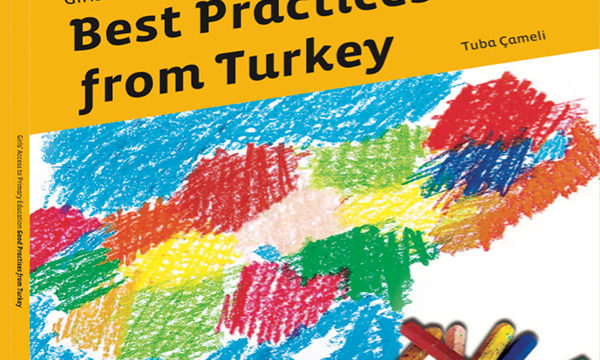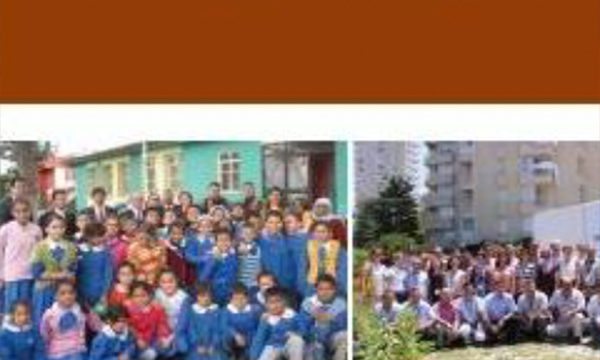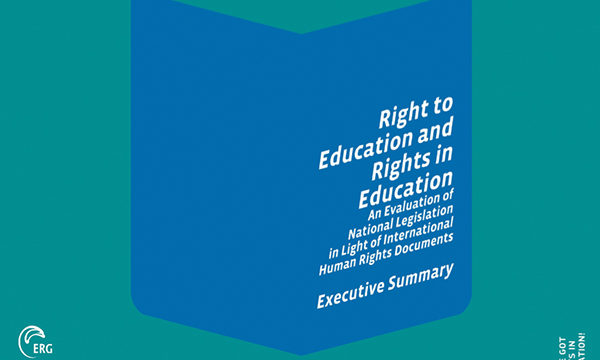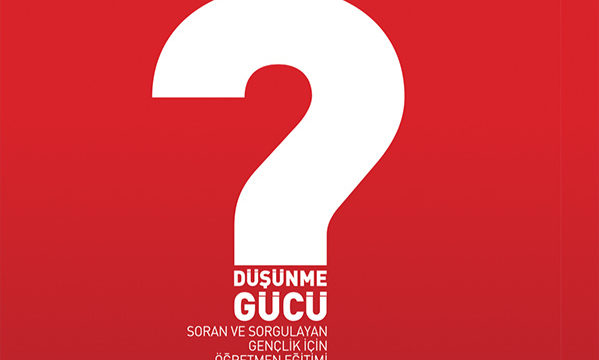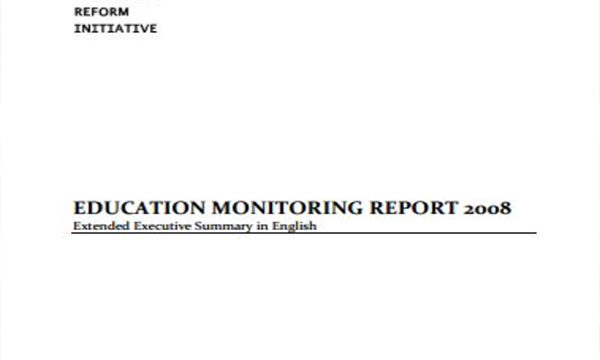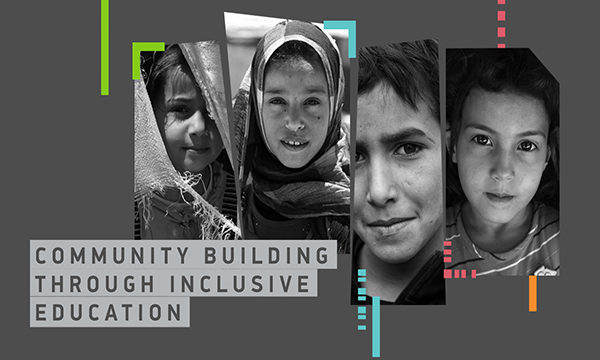Research shows that there is a strong correlation between curiosity and learning. Do schools support curiosity enough? It is possible to have an education system in which such answers like “Wait we are not there yet”, “do not disrupt the class”, “do not confuse your friends”, “you will learn in time” are not given to students’ questions. Here are the examples…
Umay Aktaş Salman
ERI Researcher
“How does cat hair grow”, “How old is the Earth”, “Why are the clouds not pink”, “Do trees chat, are they ticklish”, “Where do the numbers end”, “How big is the sea”, “Why water is not colored”, “Does our blood play too when we play games?” These questions belong to 5-year-old children.
According to a study from the United Kingdom, while a 4-year-old asks 390 questions per day, the number decreases to 144 when the child is 9 years old. But why do we ask fewer questions in time? Writer Ian Leslie analogizes curiosity to a muscle that weakens if not used regularly.
How could we keep our curiosity alive? Where could curiosity flourish the best? There is no single answer to these questions. Nevertheless, there is no doubt that school is one of the places that curiosity could flourish the most. Research shows that there is a strong correlation between curiosity and learning. Furthermore, according to experts, curiosity and interest ensure the permanence of acquired information. While there is such a correlation between curiosity and learning, do schools support curiosity enough? Do they turn curiosity into a tool for learning? Could the lessons be taught considering students’ curiosity and interests?
“Wait, we are not there yet”
The exam pressure and anxiety that the education system poses and many other issues vary among schools and teachers, as well as the answers to the questions above. However, the following examples are proof that it is possible to keep curiosity alive and teach lessons according to students’ interests. It is also possible to have an education in which answers like “Wait, we are not there yet”, “do not disrupt the class”, “do not confuse your friends”, “you will learn in time” are not given to students’ questions.
Esin Yılmaz is one of those who first is a curious mind, and works for keeping her students’ curiosity alive. Ms. Yılmaz is one of the Change Agent teachers of the Teachers Network, which is run by the Education Reform Initiative. That said, she is a teacher that voluntarily contributes to the network operations, applies and shares the tools developed within the Teachers Network, and takes action. Ms. Yılmaz defines curiosity as “a feeling that paves my way and constantly enhances me.
Ms. Yılmaz tells that in order to foster children’s curiosity, she focuses on the skills in the topics that she is required to teach according to the curriculum.
They need space in the class to go after their curiosities
“For example, there is a skill called noticing prejudices. I first wonder that and think ‘how could children notice their prejudices?’ If I am curious, I could teach. Then I sit and design the lesson by subject. We give ready information to children and get ready answers. Whereas curiosities step in when we give time and let them talk. Children need space to go after their curiosities. When we ensure that, they ask unbelievable questions and think about how they could do research. Then begins my duty: to motivate, to make them feel that any information is valuable, not to cut in by saying “this is not relevant.”
“It would not make me a teacher to be active for 40 minutes”
I used to think that being active for 40 minutes and using the time without any gaps would make me a teacher. Actually, how much space I allow them to have makes me a teacher. Students could learn the topics by looking at Google too; I want to give them the experiences and skills to reach information and design the processes of my lessons accordingly.
She taught reading maps by stitching instead of memorizing

For example, Ms. Yılmaz teaches about maps differently than the usual map reading techniques:
“We took the maps in our hands and stitched. While we were discussing streams, they saw that some are longer and meandering. They wondered “why does Kızılırmak River meander this much?” They asked, “Why these areas are browner?” They did research and saw that there were mountains. They began to look at maps from a different perspective. They learned about lakes and saw that there are many lakes in some regions, and very few in others; they saw their relationship with streams. If they do not curiosity, the process cannot continue. If we discussed the topic as usual, I would teach it by showing a color scale and say, “Low lying places are blue; here are the streams in the Black Sea and Marmara regions.” That is, they would memorize. Yet, we had a pleasant lesson that ensured lasting knowledge for students.
Another example of hers is from Ottoman history. She says that as the “Culture and Heritage” chapter in the 7th-grade textbook is on the Ottoman Empire, “it is a hard and long chapter, students do not like it because they are afraid that they will feel suffocated because of memorization. I wondered how they could be away from memorization by being curious; we have a generation that uses social media intensively. I designed a lesson starting from this.” Here is the lesson that she designed:
Ottoman Sultans are on Facebook
I asked the students “If sultans were here today, what would they share on Facebook or Twitter?” They said, “Mehmet the Conqueror would take a selfie.” They prepared Facebook, Instagram and Twitter posts onto cardboard. One student put Mehmet the Conquer and his mother’s picture and wrote “feeling happy”. Osman I wrote “Lads, we are going for Bilecik!” and his father commented: “Don’t come without taking the city.” Beyazit I shared Niğbolu and Ankara Wars on Facebook as events. Another student wrote “Former Sultan at Ottoman Empire. Hometown is Amasya. Went to Enderûn School. Lives in İstanbul.” To Murad II’s biography. One made Beyazit block Timur.

“Teachers should also say ‘I don’t know either, let’s explore together.’”
Ms. Yılmaz says that there are things that she does not know when students ask about what they curiosity, and it is important that a teacher could say ‘I don’t know either, but we can learn together’ instead of dodging the questions.
“I say ‘If I learn from you, I would be very happy; you could also share it with the class.’ Students desperately need to see that the teacher also does not know and ask questions. We have an asking corner in the class. Before moving to another chapter, we take a look at books for 20 minutes without reading, look at the pictures, and tell what we curiosity.”
She says that there is a remarkable difference between a student and a teacher asking questions, and underlines that it is necessary to encourage students to ask questions.
“When they come up with questions, they try so hard; when I ask it, they just give all right answers to fulfill the expectations of the adult and that’s all.”
The examination system is also far from memorization
Ms. Yılmaz avoids memorization not only in lessons but also in exams. She says that while the lessons are designed this way, exams cannot be made with classical techniques.
“For example, I do not ask ‘what are the properties of continental climate?’ Instead, I say ‘Ali has moved into another city. He used to wear warm clothes when going to school, but he began to wear light clothes and eats banana and orange. From which climate did he come from, and what will he see in the new one?’
“All right but will they succeed in the exam too?”
It is not easy to do these, there is also a curriculum to be completed. On the other side, there are parents that say, “All right but will they do the same in the pilot test?” or “Could you be behind the curriculum?”
She tells how she managed to put her techniques into practice:
“Is it doing things the way others want, or as you know right? I try to give the gains, not by memorization but skill-focused. I am curious about the process of doing so. If I cannot do and get away from the gains, I change my method, take initiative. First, the teacher has to be curious, the method could change any time.”
Ms. Yılmaz emphasizes that the things children learn along with being curious are much more permanent, and this is also seen in academic success:
“I want them to learn with enjoyment and eagerness to learn. The things they learn this way are not burdening for them anymore, their exam success raises as well.”
Ask-Explore-Produce method
Another teacher that gives the effort to keep children’s curiosity alive in preschool, at their peak of questioning; she is the teacher of the 5-year-old class in Mehmet Şefik Şefkatlioğlu Preschool at Büyükçekmece. Burcu Yıldırım is a Change Agent of Teachers Network, and one of the teachers of the Imagination Center that produces the “Ask-Explore-Produce” method which is an educational model that supports children’s imagination. We visited her class in which she began to apply the first stage of the model “Question Curiosity Library” and witnessed how she keeps curiosity alive.
“Who wants to be a paper plane?”
The lesson passes with a volley of questions from the students. The questions prove that children have a limitless imagination. Burcu places her students in a circle, and they begin to play the “Asking Game”. A child that stays standing asks: “Who wants to be a paper plane?” Volunteers step up and come to the middle. When one of the children looks for a chair, says “I want to be a paper plane because I want to have great adventures!” Then the standing one asks: “Who wants to treasure hunt in the maze?” Then goes the game.

Then the teacher asks children to draw the questions they are curious about. Since they are illiterate, they draw their questions and their teacher writes them on the drawings. Then they make balls with those papers and throw them to each other. When papers are opened, each student reads the question out loud and attaches onto the “Question Curiosity Library” by categories. Thus, children with common curiosities find each other and share.
“How do spiders net?”, “Why can’t we reach the rainbow?”
“Why is the sky blue when the space is black?”, “How do our bones move us?”
“Where do poop and pee go?” “Do bears want to scratch their back?” “Do seeds move under the soil?” “How do bees buzz?”
After questions are attached onto the library, the teacher continues the lesson considering children’s curiosities; so, she trains them on the basis of their interests and curiosities. The “Ask-Explore-Produce” method has other stages. Burcu tells the following stages as this:
They will explore and produce regarding their skills
“After the Question and Curiosity Library, I will pass to story-based learning. We will write stories with children based on their curiosities. Then, we will hang more cardboards and found the “I Can Assembly”. Children will attach what they can do instead of their questions this time: “I can draw, I can make music, I can sing…” They will see who does what in the Assembly. They will gather to discover and produce things based on their interests and skills. Our goal is to establish an imagination center and give them the opportunity to find answers to their questions and produce. You could adapt all these to the curriculum and apply in all grades even without the Imagination Center; that is the beauty of the system.”
Teachers at the Imagination Center apply these methods; the center is established in two schools already now.

“Their observation skill has improved”
How does this method make a difference? Ms. Yıldırım, who has applied the “Question Curiosity Library” for six months tells the difference as:
“I give the skills I want the children to have in preschool by integrating them with the topics that they are curious about the most. This ensures that they come to the school more motivated, and work more. While applying this method, I read books and made activities with children too. I listened to their questions even when I could not answer. The questions began to change, and children began to ask about what they are really curious, although they were repeated in the beginning. Children’s self-esteem and observational skills have improved. They now ask, “When are we going to play the question game?”

“My heart beats faster when I am curious”
Children are very content of expressing their curiosities and questions too. 5-year-old Ahmet Şahan says “I think curiosity is a very exciting feeling. My heart beats faster when I am curious. I want to know the answer to what I am curious about.” Ahmet Eymen Doludizgin says “curiosity is a feeling that develops one’s knowledge. I think it could also be a power source. Curiosity is the same as how philosophy is; I think they are cousins. I am super curious about things in space. I ask anyone around me.”
“If teachers bring their curiosity to the class, the quality of education improves”
Defining curiosity as a voyage of discovery, Ms. Yıldırım underlines that when teachers bring their curiosity to the class, the quality of education improves, and shares her own experience:
“When I first started my job, I thought that I was a very classical teacher. I was a graduate of faculty of education, but I had not settled my thoughts about how to do things. Then I began to get bored in the class and thought ‘What should I do?’. The classroom environment would have been more motivating if I adapted things that I curiosity into the class. For example, I love nature and children’s books; I integrated these into education. The teacher could be productive as long as they could spend time productively as well.
Each example is inspirational, and also the proof that what changes when students’ curiosities are included in the education. Teachers Network creates solutions with the applications that its teachers have developed as part of the Creative Problem Solving Program. Teachers in Denizli from both public and private schools performed studies on curiosity. One of them is “Curiosity Shop” developed by Esra Ökti, Meriç Dönmez, Pınar Gökcen, Özlem Ünal, and Derya Gürel.
They made curiosity’s positive outcomes visible
The starting point of teachers was:
“Students cannot find an environment that they can ask about the things they are curious about without being judged and are encouraged to ask more at school. curiosity becomes a concept that is not visible, not encouraged and negative for students. This blunts their curiosity of learning and desire to ask questions. So, “How can we make the positive outcomes of curiosity visible?”
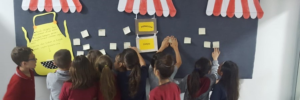
Curiosity Shop is an open to school and anonymous questioning activity. A board like a “shop” was prepared with students to an area at the school. The board is divided into two with a border. One side was written “I am curious” while the other was written “I know”. Then, it was announced to the whole school with catchy and fun methods like songs and music. Students and any other volunteers attached their anonymous questions to the “I am curious” side. If there are questions on the “I am curious” side that they knew, they took that question and attached it to the other side as they wrote the answer. Teachers regularly visited the shop. They gave stars to answers that they found satisfactory or creative; then they wrote feedbacks that would make children ask more questions. Compiled questions and answers were shared in class and announced to the school. Students did research about their questions and prepared presentations.
Curious kid equals to “naughty” kid
One of the teachers that apply this method is Pınar Göcen, a Turkish Teacher at Şehit Burhan Acar İmam Hatip Secondary School. She says “curiosity is distressing for parents and found inappropriate by society. When I asked the qualities of a curious kid, parents described a naughty kid that messes up the room. After the Curiosity Shop, students began to ask questions without hesitation. The mostly asked topic was the universe. With the Curiosity Shop, they realized that they did not mention things that they were curious about and ask questions.”
“Teachers sometimes think that if students ask too many questions, my authority may decrease”
Göcen emphasizes that teachers sometimes think that if students ask too many questions, my authority may decrease:
“Children have the worry of being excluded or sounding weird too. Sometimes teachers are distant to children that ask many questions. That is why children are repressed. Also, there is no time; there is no chatting, but there are requirements and an effort to complete the curriculum. Actually, one does not have to be curious and get a result either; sometimes you just love the problem itself. Be curious, ask, then you find other things as you ask.”
Özlem Ünal, Science Teacher at Mükerrem Mehmet Eke Secondary School has also set a Curiosity Shop. She says “They took the courage of asking questions as they saw their friends were asking. With the Curiosity Shop, teachers wrote their questions too. Questioning was spread in the atmosphere of the school.”
She reminds that curiosity is a feeling that could be brought outside the class:
“Curiosity is not within the borders of the class. Children’s curiosities may be enhanced outside of the class too. For example, I use the breaks as well. The curriculum is actually convenient to arouse the feeling of curiosity and could be developed by the teacher’s own transformation. It is up to you how you teach a lesson. Students learn things that they are curious about much more easily.”
She underlines that some families are worried about their children that they may be too curious and says, “Parents worry that their children may be contrary to society’s value judgments as they question.”
Curiosity Box for encouraging curiosity at home
Another group of teachers from Denizli got involved to the Teachers Network right at this point and developed a method named “Curiosity Box” to encourage curiosity. Ayşe Yılmaz, Hoşseda Ebru Kaynar, Murat Ökti, Yadigar Erdem, Zengiye Akın began to work by thinking “It gets harder to initiate and improve the feeling of curiosity when it is not supported at home. So, how can we change curiosity into an experience of learning?”
Students prepared a “Curiosity Box” by materials that they had at home with their parents. Everyone at home wrote questions that they are curious about and put them into the box every other day. Then, one question was randomly drawn. The parents and the student began to do research. The results were turned into a product by either preparing a poster or a presentation. Then, they were shared in a meeting to which parents were invited as well.
They continued to use the Curiosity Box at home
One of the teachers that developed the method is Ebru Kaynar, Vice Administrator of Adil Demireren Mustafa Musluoğlu Primary School. Ms. Kaynar, an educator for 20 years, emphasizes that a curious child reaches to their dreams, questions more and learns the ways of finding information. She tells that there are students that kept using the Curiosity Box at home, and other teachers use the method as well. Ms. Zengiye Akın, a form teacher at Doktor Bekir Sıddık Primary School says “They began to communicate more like a family, and saw that curiosity is not a bad thing.”
Murat Ökti says that he had very positive outcomes too:
“One student did research on cocoa after being curious about the material of chocolate. One searched for sharks, another looked for the earth and the solar system. They made beautiful presentations. There were ones that used music and animations too. I saw that parents enjoyed the process.”
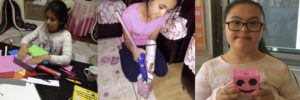
The experiences of teachers and the methods that they use reveal the effect of curiosity on learning in practice as these. How about the academic studies on the topic? One of the studies is İstanbul University Psychological Counseling and Guidance fellow Dr. Gamze İnan Kaya’s article “Curiosity and Interest in Education”.
Ms. İnan Kaya answered our questions on the relationship between curiosity and learning. She says that discovery behavior mediates the relationship between curiosity and learning:
“When people face a situation that is new, complex and needed to be understood if they feel competent and the case is worth understanding, their possibility to take action to discover it increases. We must keep in mind that curiosity has an innate quality. We are born with a natural feeling of curiosity to discover the world and keep effective records for survival. This is clearly seen in the process of a toddler that is curious about something new on each day as they learn how to walk and have a broader area of discovery.”
“Curiosity provides permanent learning as well as initiating it”
“Research on the brain shows another important point about the relationship between curiosity and learning. In the past, the initiating role of curiosity on learning was emphasized. Current findings indicate that the arousal of curiosity and its maintenance ensures permanent learning more. For example, we can imagine that we show a batten floating on water as a piece of metal sinks and then ask, ‘So how come a huge ship made of metal does not sink?’ and trigger curiosity. The current findings suggest that it provides more permanence to keep curiosity alive throughout the class instead of directly answering the question.”
Why does students’ curiosity tend to decrease?
Ms. İnan Kaya says that research also shows that as students grow up, their interests and curiosities tend to decrease. She also underlines that it is not enough that school provides only situational curiosities, but it must initiate and maintain curiosity as well as mediating students’ gain of sophisticated curiosities:
“Interest-curiosity is studied as a situationally or continuous-sophisticated-permanently qualified psychological structure. Situational curiosity indicates that a situation is found interesting and the interest is directed until the situation is understood. As for education, the aim is to change these situational interests into well-sophisticated curiosities such as mathematics or literature because this change enables coping with the challenging or boring aspects of the topic of interest. Here, the feeling of curiosity that decreases through educational stages could be actually interpreted that students have a hard time to develop sophisticated curiosities based on internal motivations or are not supported enough.”
“A supportive and assuring educational environment is necessary”
Ms. İnan Kaya says that students reason based on their past experiences while emphasizing the importance of the teacher creating a supportive and assuring educational environment:
“For example, a secondary school student may reach to an explanation that they are as much liked by their teachers as fewer questions they ask, by considering their past experiences. This explanation quite enables them to keep their scores high in a system based on memorization. This approach may seem to be easing their adaptation to the school environment but actually limits their new learning opportunities. But usually, students tend to interrupt their learning processes in order to satisfy their need of security. At this point, the importance of the teacher creating a supportive and assuring educational environment is clearly seen.”
“Curiosity is triggered and maintained under these circumstances”
“A lead experimental finding is that environments in which children feel safe to improve the discovery behaviors. By safe environments, environments in which asking questions and attempts of discovery are not under threat, cooperation is encouraged instead of competition, and learning is in a mediating role instead of a disciplining figure of authority is meant. When these conditions are provided and maintained, we can say that the triggering and maintaining of children’s curiosities are possible.”

